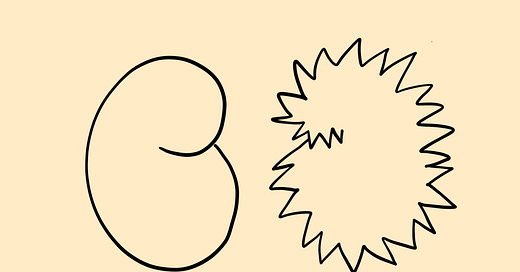Maluma and Takete (#112)
A question: If you had to give names to the to shapes in the drawing, which one would you name Takete and which one Maluma? And which one is Bouba and Kiki?
95% of English and Tamil speaking people (because the original study was tested with these languages) would agree that Maluma and Bouba represent the rounder shape and Takete and Kiki belong to the spiky shape. You too?
This effect shows that we tend to form a relationship between the visual shapes of objects and their sound representation. And this relationship can be observed in different cultures, no matter how different their language sounds. This is remarkable, because maybe there’s really a (subliminal) reason why an o is round and a k is pointy.
Sorry De Saussure, you lost.1
The Bouba/Kiki-Effect is part of a broader phenomenon: Sound smybolism. Just like Onomatopoeia from fact #83. There are some more, but I’ll spare them for another fact.
Ferdinand De Saussure was one of the founders of modern (western) linguistics and postulated the theory, that the sign is arbitrary.



